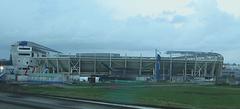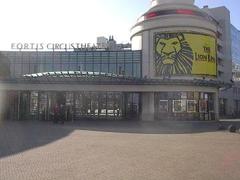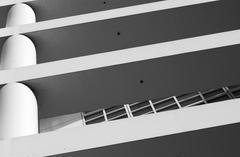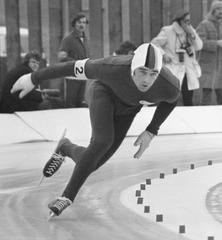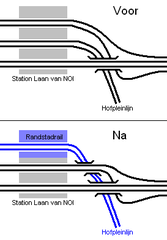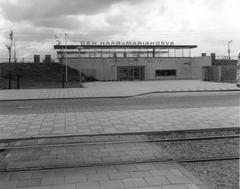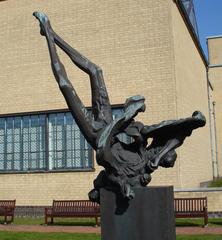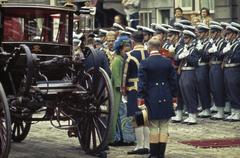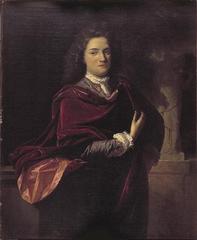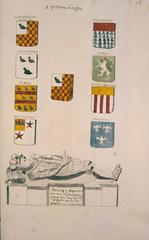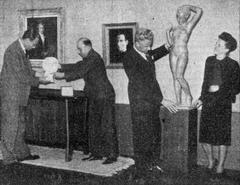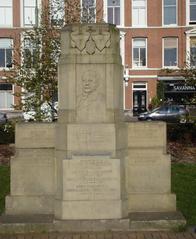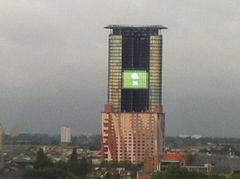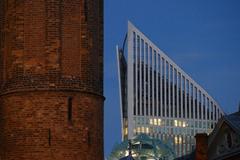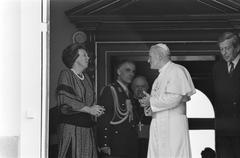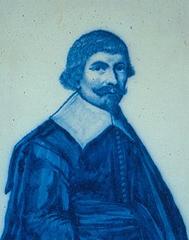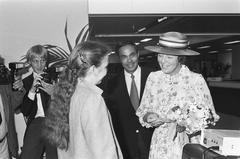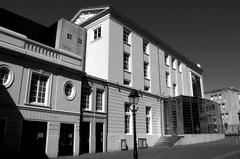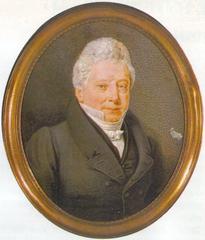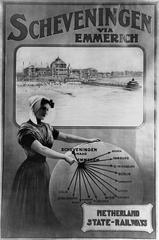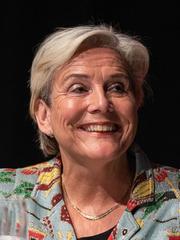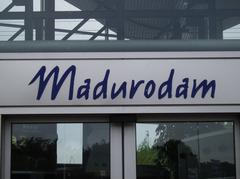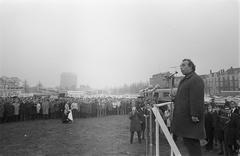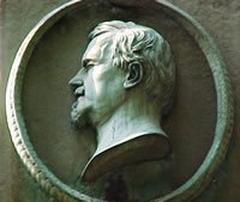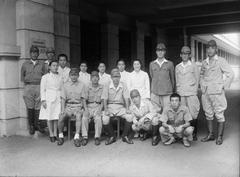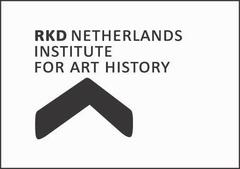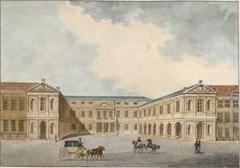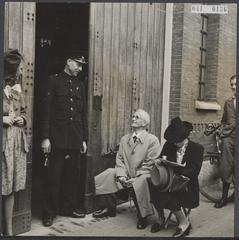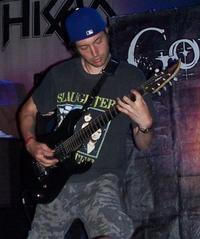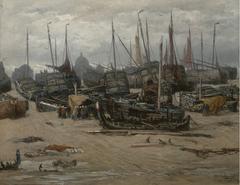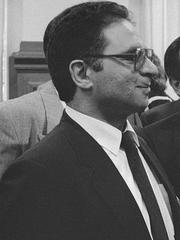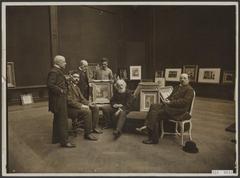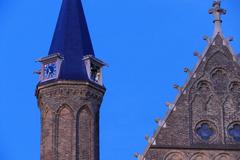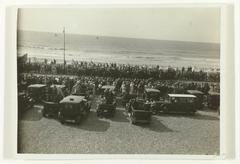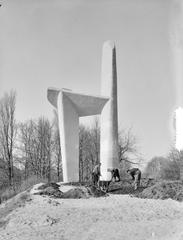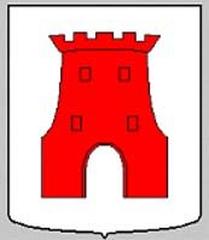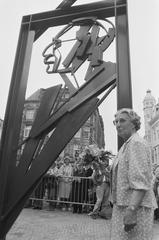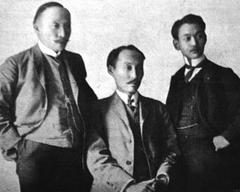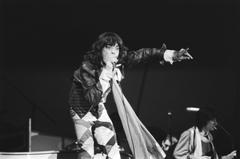Prinses Julianakerk Visiting Hours, Tickets, and Guide to The Hague Historical Sites
Date: 04/07/2025
Introduction
Prinses Julianakerk in The Hague is a remarkable testament to Dutch royal heritage, innovative architecture, and vibrant community life. Named after Princess Juliana, who was born at Noordeinde Palace in 1909, the church stands as a symbol of both historical significance and contemporary cultural engagement. Located in the Scheveningen district, this landmark is celebrated for its early 20th-century architectural style and its ongoing role as a spiritual, cultural, and social hub in The Hague. This guide provides comprehensive information on Prinses Julianakerk’s history, architecture, visiting hours, ticketing, accessibility, events, and nearby attractions, enabling visitors to plan a meaningful and enriching experience in The Hague. (Prinses Julianakerk official site; Wikipedia on Juliana of the Netherlands)
Historical Background and Royal Connections
Origins and Construction
Built to honor Princess Juliana, the Prinses Julianakerk reflects the growth and transformation of The Hague in the early 20th century. The church was constructed to serve the spiritual needs of the expanding Duindorp community, embedding royal legacy within a modern urban context. Its inauguration in 1928 was attended by members of the royal family, affirming the church’s close ties to Dutch royalty. (Prinses Julianakerk official site)
Architectural Features and Style
The church is a prominent example of the zakelijk-expressionistische (businesslike-expressionist) style, characterized by robust geometric forms, minimal ornamentation, and functional design. Designed by Willem Chiel Kuijper Jr., the building features monumental brickwork, a striking tower, and spacious, light-filled interiors. The nave offers excellent acoustics, making it a favored venue for concerts and community gatherings. (nl.wikipedia.org)
The Hague and the Royal Family
The Hague serves as the administrative and royal heart of the Netherlands, home to palaces such as Noordeinde and Huis ten Bosch. Princess Juliana’s birth and upbringing in the city strengthen the symbolic connection between the church and the Dutch monarchy. The Prinses Julianakerk often hosts local celebrations and commemorations tied to the royal family, reinforcing its status as a focal point of civic pride and tradition. (Netherlands Expat)
Juliana’s Legacy
Queen Juliana’s reign (1948–1980) was marked by a commitment to social justice and inclusivity. Prinses Julianakerk embodies these values through its welcoming atmosphere and robust community outreach, making it an enduring symbol of both royal heritage and social engagement.
Architectural Style and Urban Context
Zakelijk-Expressionistische Stijl and Architectural Context
The church’s design by Willem Chiel Kuijper Jr. reflects the zakelijk-expressionistische style—combining expressive architectural form with rational, utilitarian features. The use of local brick, vertical windows, and a commanding tower ensures the building is both functional and visually striking. Its position at the intersection of Nieboerweg, Tesselsestraat, and Vlielandsestraat makes it a prominent landmark in Duindorp. (deduindorper.nl)
Interior Layout and Renovations
The interior is spacious and uncluttered, with a focus on the pulpit and organ. Renovations in the 1970s modernized the space while maintaining its historical integrity, including the installation of a new organ by Gebr. Reil. Community spaces support a variety of social and cultural activities, reinforcing the church’s role as a neighborhood hub. (prinsesjulianakerk.nl)
Urban Integration
Prinses Julianakerk is integral to the Duindorp neighborhood, developed to accommodate The Hague’s growing population. The church’s towering presence above the low-rise housing and its proximity to the ‘Bosjes van Poot’ and the dunes create a harmonious blend of urban and natural landscapes. The church remains easily accessible by public transport, bicycle, and on foot, reflecting The Hague’s well-connected urban fabric.
Cultural, Religious, and Community Role
Community and Cultural Activities
Prinses Julianakerk is a vibrant center for community life, hosting a range of events such as cycling days, children’s church, and innovative worship services that engage both long-standing residents and newcomers. The church is a key venue for concerts, art exhibitions, and festivals like Open Monumentendag, highlighting its importance in The Hague’s cultural scene. (Prinses Julianakerk events; Den Haag cultural events)
Religious Diversity and Interfaith Engagement
While rooted in the Protestant tradition, Prinses Julianakerk actively engages with The Hague’s diverse religious communities. It collaborates with Catholic, Orthodox, Jewish, Muslim, Buddhist, and Baha’i organizations on interfaith projects, fostering social cohesion and mutual understanding. Services are primarily in Dutch, but internationals are welcome, and English-language materials are sometimes available. (The Hague International Centre – Religion)
Social Outreach and Youth Programs
The church partners with local charities, food banks, and social services to support vulnerable populations, including refugees and migrants. Youth and family initiatives such as “Kinderkerk De Ark” provide nurturing spaces for children, while teens and young adults can participate in discussion groups, volunteering, and social events.
Practical Visitor Information
Visiting Hours
- Monday to Friday: 10:00 AM – 5:00 PM
- Saturday and Sunday: 12:00 PM – 4:00 PM
- Sunday Services: 10:00 AM and 6:00 PM; visitors are welcome after services.
Hours may vary during public holidays or special events. Always check the official website for the latest updates.
Tickets and Admission
- Entry: Free for worship services and most community events.
- Guided Tours: Group tours are available by advance booking, typically for a small fee. Special concerts or exhibitions may require separate tickets.
Accessibility
- The church is fully wheelchair accessible, with ramps and accessible restrooms.
- Multilingual guides and printed materials are available for visitors.
- Staff can assist with special needs upon request.
Visitor Guidelines
- Dress respectfully and maintain silence during services.
- Photography is generally permitted but discouraged during worship unless otherwise indicated.
Getting There and Travel Tips
- Public Transport: Easily accessible via tram lines 11 and 12, or by bus.
- Parking: Limited street parking; public parking garages are available within walking distance.
- Cycling: The Hague’s extensive bike paths make cycling a convenient option.
Facilities
- Community spaces, accessible restrooms, and event information are available on-site.
- The church offers event schedules, brochures, and audio guides in multiple languages.
Nearby Attractions in The Hague
- Noordeinde Palace: Royal residence and birthplace of Princess Juliana.
- Grote Kerk (St. Jacobskerk): Historic church with royal connections.
- Binnenhof and Ridderzaal: The seat of Dutch parliament and iconic Gothic hall.
- Mauritshuis: Renowned art museum, home to masterpieces like Vermeer’s “Girl with a Pearl Earring.”
- Scheveningen Beach: A lively destination for seaside recreation, within walking distance.
- Clingendael Park and Japanese Garden: Serene park with a rare Japanese garden.
- Kunstmuseum Den Haag: Showcasing modern art including Mondrian’s works.
- Madurodam: Interactive miniature park displaying Dutch landmarks.
- Chinatown: A vibrant district for Asian cuisine and culture.
- Local Shopping and Dining: Explore Denneweg, Noordeinde, and seasonal antique/book markets.
Frequently Asked Questions (FAQ)
Q: What are the Prinses Julianakerk visiting hours?
A: Monday to Friday, 10:00 AM–5:00 PM; weekends from 12:00 PM–4:00 PM. Always check the official website for updates.
Q: Is there an entry fee?
A: No, entry is free for regular visits and most events. Some concerts or exhibitions may require tickets.
Q: Are guided tours available?
A: Yes, group tours are available by advance arrangement; some events offer guided tours.
Q: Is the church wheelchair accessible?
A: Yes, facilities are provided for visitors with mobility challenges.
Q: Can I take photos inside the church?
A: Photography is allowed outside of services and private events.
Q: What attractions are nearby?
A: Noordeinde Palace, Scheveningen beach, Mauritshuis, Binnenhof, and more are within easy reach.
Visuals and Interactive Media
High-quality images and virtual tours are available on the Prinses Julianakerk official website, showcasing the exterior, interior, community events, and neighborhood views. Alt tags for images should include terms like “Prinses Julianakerk Scheveningen,” “The Hague historical sites,” and “Dutch church architecture.”
Conclusion and Call to Action
Prinses Julianakerk is a must-visit destination in The Hague, offering a unique blend of architectural innovation, royal history, and vibrant community engagement. Whether you’re interested in exploring Dutch heritage, attending concerts or exhibitions, or simply enjoying the architectural beauty, the church promises a memorable and meaningful visit. For the latest updates on visiting hours, events, and ticketing, consult the official Prinses Julianakerk website.
To enhance your visit, download the Audiala app for guided audio tours and live event updates, and follow us on social media for the latest news and stories from The Hague’s most iconic landmarks.
References
- Prinses Julianakerk official site
- Prinses Julianakerk Scheveningen: Visiting Hours, Tickets, and Historical Significance in The Hague
- Visiting Prinses Julianakerk in The Hague: Hours, Tickets, and Cultural Significance
- Netherlands Expat - The Dutch Royal Family
- Wikipedia - Juliana of the Netherlands
- The Hague International Centre - Religion in The Hague
- Den Haag Cultural Events
- deduindorper.nl - Juliana Kerk
